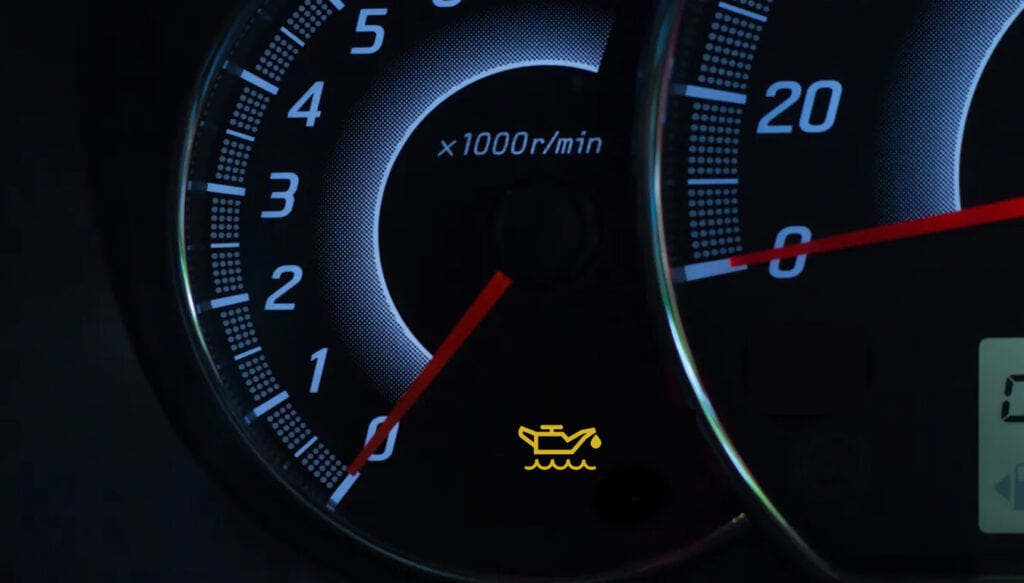Your Car’s Lifeline – The Essence of Timely Oil Changes
Think of the engine as the heart of your car. Just as our hearts need healthy blood to function optimally, engines need fresh oil. The oil change reminder light isn’t just another trivial indicator; it’s analogous to a timely health check-up. When that light comes on, it’s reminding you to ensure the lifeblood of your vehicle remains pure and efficient.
The Gentle Nudge: Decoding the Oil Change Warning Light
You might have seen it—an orange light shaped like an old-fashioned oil can. This isn’t your car playing charades; it’s conveying a critical message. That recognizable orange icon on your dashboard is the embodiment of your car’s communication system. Think of it as a visual language, and this particular symbol, glowing in a muted tangerine shade, speaks volumes about your vehicle’s internal needs. This little icon’s primary message? Your engine craves a fresh dose of oil to keep things running smoothly.
But why the deliberate choice of that shade of orange? In automotive design, colors are chosen with purpose. An orange light typically falls somewhere between a casual heads-up and an urgent warning, a sort of friendly nudge from your car. Sure, it might seem like just another chore in the early stages. But let’s be clear: prolonged inaction doesn’t just result in the light becoming more persistent or annoying. Over time, old oil loses its efficiency, leading to increased friction, heat, and wear on engine parts. This scenario is a precursor to larger, more costly complications. The message is simple but crucial: heed the nudge and prioritize your car’s health.

Rolling with Caution: The Risks of Driving Post the Oil Warning
There’s a certain allure to living on the edge, whether it’s stretching a dollar bill or squeezing out those last few kilometers from your vehicle even after warning lights flare up on the dashboard. However, when the oil light pops up, it’s your car’s candid way of voicing its vulnerability. Imagine, if you will, setting out on a grueling marathon under the blazing sun without a single drop of water to quench your thirst. You might manage for a while, but eventually, fatigue will catch up, and the consequences could be dire.
Similarly, while your car might not come to an immediate halt the moment that oil light comes on, it is indisputably running on borrowed time. Every kilometer you push forward without addressing the issue is a kilometer where engine components rub against each other without adequate lubrication. This not only amplifies friction but also escalates the wear and tear of these integral parts. As they continue to operate in such strained conditions, the risk of permanent damage and costly repairs looms large. So, while it might be tempting to think, “Oh, just a few more kilometers,” remember that with every meter you tread, you’re inching closer to a potential vehicular crisis. Respect the warning, pause, and prioritize the well-being of your engine.
The Heart’s Cry: Why an Oil Light Appears Even After a Recent Change
• Picture this: You’ve just had an oil change, yet, your car insists otherwise. Frustrating, right? Modern vehicles have complex monitoring systems, and any misstep can lead to false alerts.
• Sensor Sensitivity: Modern vehicles are equipped with oil quality and level sensors that continuously monitor the condition of your oil. Sometimes, these sensors can malfunction or become overly sensitive, signaling an oil change alert even if the oil is fresh.
• Resetting Routines: After every oil change, the system typically requires a reset to recalibrate and recognize the new oil. Failure to reset or incorrect resetting can cause the vehicle’s system to operate based on old data, triggering the warning light despite a recent change.
• Oil Quality Discrepancies: Not all motor oils are created equal. Using a different oil grade or type than recommended can confuse the monitoring system. Even if the oil is new, if its quality or viscosity doesn’t match the vehicle’s requirements, it might set off the alert.
• Residual Oil Remnants: Sometimes, during an oil change, old oil residue can remain in the engine or on the sensor. This leftover oil can mislead the sensors into believing the oil hasn’t been changed.
• Electrical Glitches: On rare occasions, electrical hiccups within the vehicle’s system can trigger unwarranted warnings. A disconnected wire, corrosion, or even a blown fuse related to the oil monitoring system can lead to false alerts.
• Immediate Action: If the oil light appears shortly after a change, it’s best to revisit your mechanic or service provider. They can check for any of the aforementioned issues, ensure the right oil type was used, and properly reset the system to avoid any future misreads.
Not All Lights are Created Equal: Distinguishing Between Oil Level and Oil Change Alerts
When that little oil can icon illuminates on your dashboard, it’s easy to feel a tinge of anxiety. Oil is vital, but not all oil lights carry the same message. There’s a distinction between needing fresh oil (oil change reminder) and running low on oil. It’s crucial to differentiate, as the latter is an urgent cry for attention.You might’ve just refilled your engine’s lifeblood and yet, that stubborn light persists. Why? It could be signaling one of two main warnings.
The first, known as the oil change reminder, is a courteous notification from your car. It’s essentially saying, “Hey, based on the miles you’ve clocked, the time elapsed since our last meeting, and the way you’ve been driving, I could use some fresh oil soon.” It’s a calculated alert, making sure you’re in tune with the regular maintenance schedule.
In stark contrast, there’s the oil level warning. When this alert sounds, it’s an indication that the oil level is dangerously low. It’s an immediate call to action, as turning a blind eye could lead to disastrous outcomes. From a drop in performance to severe, often irreversible engine damage, the repercussions of neglecting this warning are serious and far-reaching.
Immediate Response: Steps to Take When the Oil Warning Surfaces Mid-Journey
A lit oil light in the middle of a drive can be daunting. Safety first! It’s always better to pause and address the issue, even if it seems minor:
• Safety Prioritization: As soon as the oil light illuminates, avoid panic. Safety should be your paramount concern; find the nearest spot to pull over safely without disrupting traffic flow.
• Engine Assessment: Once parked securely, turn off the vehicle and allow the engine to cool for a moment.
• Physical Inspection: Step out and check underneath the vehicle for any visible oil leaks or spills. Such indicators can provide immediate insights into the issue.
• Gauge Check: After ensuring there are no external leaks, use the vehicle’s dipstick to gauge the oil level. Ensure the engine is off for accurate readings.
• Professional Intervention: If uncertain about the cause or if the issue persists, it’s best to contact a mechanic or roadside assistance. Avoid the temptation to continue driving as it could exacerbate potential problems.

Anatomy of the Reminder: What Influences the Oil Change Alert
Today’s vehicles are marvels of technology. Cars have come a long way from the days when a simple odometer reading decided when you should change your oil. In this era of technological advancements, vehicles have become astoundingly smart, adapting to your driving habits and the conditions they face to determine when an oil change is truly necessary.
Most modern vehicles employ a combination of factors to alert drivers about the need for fresh oil. Beyond just tracking mileage, these systems consider variables such as the duration since the last oil change, ambient temperatures, engine load, and even the number of cold starts. It’s as if your car is equipped with its own sixth sense, continuously gauging its health and guiding you on its maintenance needs. By considering these multifaceted factors, your vehicle offers a more personalized and precise reminder, ensuring it gets the care it needs right when it needs it. After all, timely maintenance is key to keeping your ride purring smoothly for the long haul.
The Financial Side: Costs Associated with Ignoring the Reminder and Potential Repairs
Ignoring that gentle nudge can lead to a hefty blow to your wallet. Proactivity not only keeps your vehicle healthy but also shields you from unwarranted expenses.
• Routine Maintenance vs. Major Repairs: Regular oil changes, typically not overly expensive, are fundamental for engine longevity. Neglecting such routine maintenance can culminate in extensive engine damage that’s significantly pricier to address.
• Compounded Issues: Ignoring the oil change reminder might not only lead to engine problems but can also affect other parts, including the oil pump or the catalytic converter.
• Resale Value: Vehicles regularly maintained, especially with documented oil changes, generally have a higher resale value. Negligence can devalue your vehicle substantially.
• Unseen Expenses: Beyond direct repair costs, engine issues due to deferred oil changes can lead to reduced fuel efficiency, demanding more frequent fill-ups.
• Potential towing charges: If the engine seizes or fails while on the road, can be another unplanned expense.
• Long-Term Vision: Prioritizing small regular maintenance costs can save vast sums in potential repairs and replacements in the long run. Think of it as an investment in your vehicle’s health and longevity.
Driving into the Future with Confidence and Care
Ensuring your vehicle’s longevity and efficient performance is as simple as heeding its warnings. Those oil change reminders? They’re not just about maintenance; they’re about ensuring every journey is smooth, and every destination is reached safely. And remember, for all your oil change needs or if that reminder feels off, there’s Uchanics, your trusted mobile mechanic service in Canada, always ready to assist.
